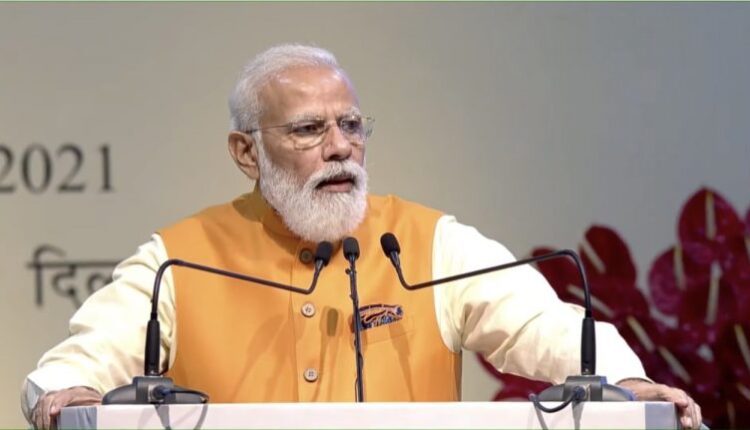Prime Minister Narendra Modi on Wednesday launched a Rs 100 lakh crore national master plan for multi-modal connectivity that aims to develop infrastructure to reduce logistic costs and boost the economy.
NEW DELHI, Oct 13: Prime Minister Narendra Modi on Wednesday launched a Rs 100 lakh crore national master plan for multi-modal connectivity that aims to develop infrastructure to reduce logistic costs and boost the economy.
PM Gati Shakti targets to cut logistic costs, increase cargo handling capacity and reduce the turnaround time, Modi said at a function to launch the plan.
The plan aims to lend more power and speed to projects by connecting all concerned departments on one platform, he said, adding the infrastructure schemes of various ministries and state governments will be designed and executed with a common vision.
Modi said taxpayers’ money in the past was ‘insulted’ through a lethargic approach to development work, with departments working in silos and there was no coordination on projects.
Development, he said, is not possible without quality infrastructure and the government has now resolved to develop it in a holistic manner.
Gati Shakti joins different departments for the coordinated development of projects from road to railways, aviation to agriculture, the Prime Minister said.
Stating that high logistics cost in India at 13 per cent of GDP was impacting competitiveness in exports, he said PM Gati Shakti is aimed at reducing logistic cost and turnaround time.
This, he said, will give a boost to India as an investment destination.
The Prime Minister said the speed and scale that India is witnessing under his government was never seen in the previous 70 years of independence.
Giving examples, he said the first inter-state natural gas pipeline was commissioned in 1987. From then to 2014, 15,000-km of the natural gas pipeline was built. Currently, more than 16,000-km of the new gas pipeline is being constructed.
“What was done in 27 years, we are doing in it in less than half that time,” he said.
In five years prior to the BJP government coming to power in 2014, 1,900-km of the rail line was doubled, while in the last 7 years 9,000-km of rail line doubling has happened.
Similarly, against 3,000 km of railway line electrification in five years prior to 2014, 24,000 km rail line doubling has happened in the last 7 years.
From 250-km of metro in 2015, the metro rail network has expanded to 700-km and work is on another 1,000-km, he said, adding 1.5 lakh village panchayats have been connected with optic fibre network in last 7 years as compared to only 60 village panchayats in five years prior to 2014.
Vessel turnaround time at ports has been reduced from 41 to 27 hours and attempts are being made to reduce it further, he said, adding 4.25 lakh circuit km of power transmission line have been laid against 3 lakh circuit km in five years prior to 2014.
Renewable energy has expanded the times, he said.
PM GatiShakti plan involves the creation of a common umbrella platform through which infrastructure projects can be planned and implemented in an efficacious manner by way of coordination between various ministries/departments on a real-time basis.
With more visibility and availability of information and data on a real-time basis, there will be efficient implementation of infrastructure projects, less information asymmetry between ministries, reduction in working in silos as well as fewer delays due to lack of coordination between various Government agencies. (Agencies)

